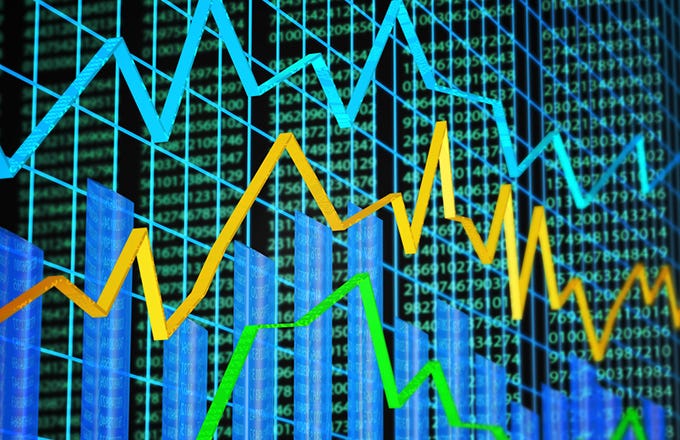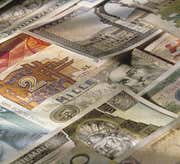
|
Futures traders try to predict what the value of an underlying index or commodity will be at some point in the future. Speculators in the futures market can use different strategies to take advantage of rising and declining prices. The most basic are known as going long, going short and spread trading.
Long and Short Trades
Trades can be entered in two different directions, depending on where you expect the market to go.
Long trades are the classic method of buying with the intention of profiting from a rising market. Even though losses could be substantial, they are considered limited because price can only go as low as $0 if the trade moves against you.
Short trades, on the other hand, are entered with the intention of profiting from a falling market. Once price reaches your target level, you buy back the shares (buy to cover) to replace what you originally borrowed from your broker. Trading short positions is an important part of active trading because it allows you to take advantage of both rising and falling markets – but it takes extra caution.
Unlike long trades, where losses are considered limited because price can’t go below $0, short trades have the potential for unlimited losses. That’s because a short trade loses value as the market rises, and since price can theoretically continue rising indefinitely, losses can be unlimited – and disastrous. You can manage this risk by always trading with a protective stop-loss order – a line in the sand beyond which you won’t risk any more money. (For more, see The Stop-Loss Order: Make Sure You Use It.)
Whether you go long or short, you must have a large enough balance in your trading account to meet the initial margin requirement for the particular contract.
Spread Trading
Going long or short involves buying or selling a contract now to take advantage of rising or falling prices in the future. Spread trading is another common strategy used by futures traders.
Spread trading combines a long and short position entered at the same time in related futures contracts. The idea behind the strategy is to profit from the price difference between the two contracts while, at the same time, hedge against risk. For example, assume you put on a spread in gold. If gold prices rise, the gain on the long position will offset the loss on the short one – and the reverse would happen if gold prices fall. Essentially, you assume the risk of the difference between the two contracts instead of the risk of a single futures contract. In general, spread trading is considered to be less risky than taking an outright futures position.
There are several different types of spreads, including:
-
Calendar Spreads. This involves simultaneously buying and selling two contracts of the same type and price, but with different delivery dates. These spreads are popular in the grain markets due to the seasonality of planting and harvesting. For example, you could sell the July contract for corn and at the same time buy the December contract.
-
Intermarket Spreads. With this type of spread, you buy and sell different but often related contracts, usually with the same expiration month. You could trade an intermarket spread, for example, by simultaneously buying hard red winter wheat and selling soft red winter wheat (or vice versa, depending on market conditions). These are also called inter-commodity spreads.
-
Inter-Exchange Spreads. This is any type of spread in which each position is created in a different futures exchange. For example, you may buy one contract on CBOT and sell one on NYMEX.
(For related reading, see Beginner’s Guide to Trading Futures.)
Futures Fundamentals: How To Trade
-
 Trading
TradingTrading Calendar Spreads in Grain Markets
Futures investors flock to spreads because they hold true to fundamental market factors. -
 Trading
TradingUsing Calendar Trading Strategy For Better Profits
Depending on how you implement this calendar trading strategy the trade can provide many advantages that a plain old call cannot provide on its own. -
 Investing
InvestingInvesting in Crude Oil Futures: The Risks and Rewards
Learn about the risks and rewards of trading oil futures contracts. Read about a few strategies to limit the risk in trading oil futures contracts. -
 Investing
InvestingGetting Market Leverage: CFD versus Spread Betting
Compare and contrast: CFD versus Spread Betting investment products, which offer significant market exposure with a small initial deposit. -
 Trading
TradingWhat Is A Bull Put Spread?
In a bull put spread, the options trader writes a put on a security to collect premium income and perhaps buy the security at a bargain price. -
 Tech
TechThe Exciting World Of The Top Spread Betting Brokers
Spread betting can be fun, but it's risky and you will want a reliable broker. Here are the top spread betting brokers. -
 Trading
TradingOption Spread Strategies
Learn why option spreads offer trading opportunities with limited risk and greater versatility.


